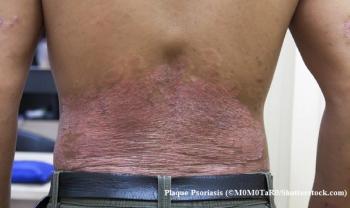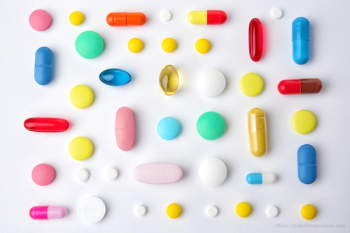
How Biosimilars Could Affect Psoriasis Treatment Costs
Because of the inflammatory nature of psoriasis, biologics are good drug candidates, but could affect cost and reimbursement.
A 2017
“When facing high out-of-pocket costs, some patients do not use their medications appropriately; they will choose to skip doses in order to save money or may abandon their treatment regimen altogether,” says Abby Van Voorhees, MD, chairwoman of the National Psoriasis Foundation Medical Board.
Related article:
The
Although newer biologics offer significant improvement in treating psoriasis, they are expensive. “Many patients are not treated with these products because of cost and reimbursement issues,” says Elizabeth Krutoholow, MSc, senior analyst at
“Because almost no one can afford the sticker price of biologic medications (i.e., $40,000 to $80,000 annually per patient), a web of patient assistance, free drug programs, prior authorizations assistance, and other programs have arisen but are inconsistently applied,” says Colby Evans, MD, a dermatologist at
Biosimilars-a lower cost solution?
Because of the inflammatory nature of psoriasis, biologics are good drug candidates, says Zvi Loewy, PhD, professor and associate dean of research at
The certification process for original biologics includes initial laboratory and animal testing to prove safe use in humans, which allows further clinical trials in humans under an investigational new drug application, according to FDA regulations, Zamanian explains. The final license for biologics states that the product, the manufacturing process, as well as manufacturing facilities must meet requirements to ensure the product’s safety, purity, and potency.
Meanwhile, the approval process for biosimilars is based on their comparison with the referenced original biologic. A biosimilar must be proven to be highly similar to an already FDA-approved original drug with no clinically meaningful differences in terms of safety and efficacy. “This substantially reduces the cost of development and therefore the final price of biosimilars,” Zamanian says.
Biosimilars have been promised as a solution to high costs by injecting some competition into the market once a reference drug has gone off patent. “But no one knows whether there will be any appreciable savings yet, and importantly, who will end up with the money if there are,” Evans says. In comparison, when a typical drug becomes generic, after six months it generally will have approximately 75% of the market share and the price will have come down 40% or more.
Outlook
As of 2017, Inflectra and Renflexis were the only biosimilars launched in the U.S. market. However, nearly 20 biosimilars are close to approval in the U.S. market and will become available within the next five years, assuming that they overcome the litigation hurdles posed by biologic originator manufacturers. “Since the United States has the largest immunology market, due to the higher cost and easier access to drugs, the biosimilar market is also expected to grow rapidly by association,” Zamanian says. “By 2023, biosimilars will capture more than 5% of the total U.S. immunology drugs market, growing at a high double-digit rate.”
Related article:
However, Evans is more cautious about biosimilars’ impact, noting that they pose somewhat of a challenge to physicians and patients because they are new and often are completely untested in psoriasis. “I suspect that many physicians and patients would prefer the reference drug, which is well known to them, over a biosimilar unless they are forced to use it by their insurance company or pharmacy benefit manager.”
Newsletter
Get the latest industry news, event updates, and more from Managed healthcare Executive.





















































